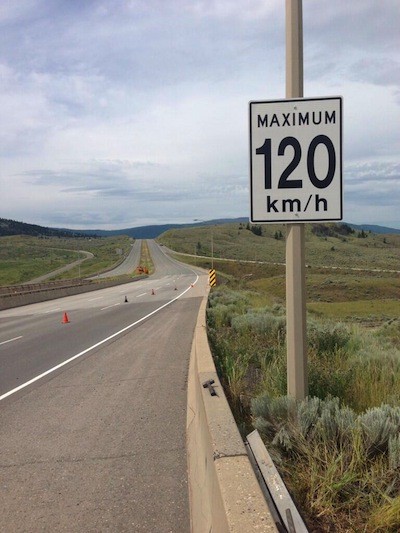Don’t expect big rigs to adopt the higher speed limits now in effect on some B.C. highways.
The B.C. Trucking Association, which opposed the move, says its member companies had “no appetite for higher speed limits” and will likely direct their drivers to maintain their current speed policies in the name of safety and efficiency.
President Louise Yako said association members fear a higher risk of crashes between trucks and other vehicles that will now increasingly travel at faster speeds, leaving less room for large trucks to take evasive action in an emergency.
“People can make mistakes and use poor judgment,” Yako said, urging drivers to take extra care to give trucks room in light of the new limits.
Related story: Speed limits going up around B.C.
A loaded tractor-trailer on dry pavement takes 180 metres to come to a stop from 105 km/h compared to 107 metres at 90 km/h.
She said higher fuel consumption and emissions at faster speeds are also a consideration for many firms.
Yako said the BCTA welcomes the province’s move to pilot variable speed signs that will reduce the limit during winter road conditions on a couple of trial routes.
The variable speed limit routes include the Coquihalla between Hope and the old toll booth, a section of the Sea-To-Sky Highway from Squamish to Whistler and Highway 1 from Sicamous to Revelstoke.
In the Fraser Valley, drivers will now be able to legally drive 110 km/h from Whatcom Road (exit 95) in Abbotsford to the Highway 3 junction in Hope.
A maximum speed limit of 120 km/h takes effect for the first time in B.C. on the Coquihalla from Hope to Kamloops, the Okanagan Connector (Highway 97C) and Highway 19 from Parksville to Campbell River.
Sections of the Sea-to-Sky and Hope-Princeton highways now increase from 80 or 90 to either 90 or 100 km/h.
